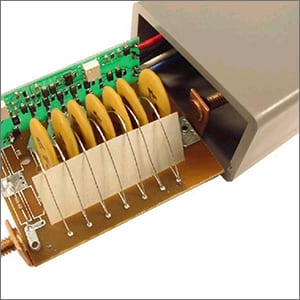Article 517 of the NEC prescribes special electrical requirements for added safety and protection in Health Care Facilities. One way that this is accomplished is by the division of essential and non-essential electrical loads. The Essential Electrical System (EES) is required to be installed in Health Care Facilities. Electrical loads on the EES are further divided into the following categories:
- Equipment Branch
- Critical Branch
- Life Safety Branch
The equipment branch is designated for essential HVAC systems and vacuum pumps, for example. The critical branch serves patient care systems and associated lighting. The life safety branch provides power to egress lighting, automatic doors, elevators, fire alarm systems, and emergency communication systems.
Critical Operating Power Systems
It is critical that power to these loads is as stable and uninterrupted as possible to ensure the safety of patients, doctors and other staff. To ensure this, equipment must be protected from power surges and overvoltage conditions Article 708 of the NEC prescribes requirements for Critical Operating Power Systems, which provide power for Critical Operating Areas. One such requirement is that the system be evaluated for potential impacts for natural and human-caused events. As part of the protection against these events, adequate surge protection should be provided for electrical systems serving Critical Operating Areas.
Surge Protection Devices
When designing a surge protection system, IEEE 1100 recommends a cascaded approach, with appropriately sized Surge Protection Devices (SPDs) located at the service entrance, primary and secondary panelboards. With this approach, excess voltage at the service entrance can be effectively shunted, and primary and secondary distribution can be protected from transient overvoltages. EP recommends the following elements for SPD protection:
- Service Entrance protection provides a first line of defense against surges from external sources.
- Transfer Switches should have SPDs on both the normal and emergency terminals of a transfer switch.
- Panelboards and Switchboard protection will protect downstream equipment from transient overvoltages that originate within the facility’s electrical system.
- Other Systems where directed protection is desired, such as security, access control, and IT systems.
Contact us today for assistance designing the power system for your Health Care Facility with added protection from SPDs.
